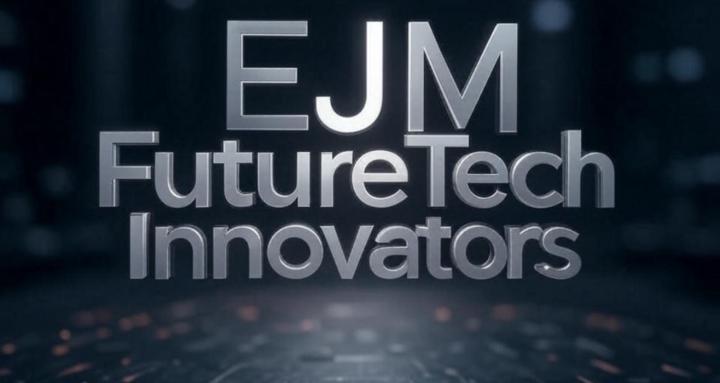2d • 👨💻Technology trend
How Is Metaverse Infrastructure Revolutionizing Digital Real Estate and Virtual Economies?
The metaverse infrastructure market encompasses the fundamental technological backbone required to support immersive virtual environments, including network infrastructure, cloud computing platforms, data storage solutions, development frameworks, and hardware systems. This infrastructure enables seamless interactions between users, digital assets, and virtual worlds, supporting applications ranging from gaming and social media to enterprise collaboration and digital commerce.
Metaverse infrastructure includes critical components such as 5G networks, edge computing systems, blockchain platforms, artificial intelligence algorithms, extended reality (XR) hardware, and cloud-based services that collectively power the creation, deployment, and operation of virtual environments. As organizations increasingly adopt digital twin technologies, virtual workspaces, and immersive customer experiences, robust infrastructure becomes essential for delivering low-latency, high-fidelity virtual interactions.
Market Value and Growth Trajectory
The metaverse infrastructure market is experiencing unprecedented growth across multiple sectors. The global metaverse market size was estimated at USD 105.40 billion in 2024 and is projected to reach USD 936.57 billion by 2030, growing at a CAGR of 46.4% from 2025 to 2030. Other research indicates even more aggressive growth projections, with some estimates suggesting the market could reach USD 1,303.4 billion by 2032, growing at a CAGR of 48.1%.
This explosive growth reflects increasing enterprise adoption of metaverse technologies for training, collaboration, and customer engagement, alongside consumer demand for more sophisticated gaming and social experiences. The substantial investment in infrastructure development indicates strong confidence in the metaverse's long-term viability as a transformative technology platform.
Market Insights and Key Growth Factors
Several factors are driving the rapid expansion of metaverse infrastructure:
Digital Transformation Acceleration: Organizations are leveraging virtual environments to enhance remote work capabilities, conduct immersive training programs, and create innovative customer experiences. The COVID-19 pandemic accelerated adoption of virtual collaboration tools, creating sustained demand for metaverse infrastructure.
Technology Convergence: The integration of artificial intelligence, blockchain, 5G networks, and cloud computing creates synergistic effects that enhance metaverse capabilities. Advanced AI enables realistic virtual interactions, while blockchain provides secure digital asset management and ownership verification.
Consumer Engagement Evolution: Users increasingly expect interactive, personalized digital experiences across gaming, entertainment, education, and commerce. This demand drives continuous infrastructure improvements to support more sophisticated virtual environments.
Enterprise Investment: Major corporations are investing heavily in metaverse technologies for employee training, product design, customer service, and marketing applications. This enterprise adoption provides stable revenue streams for infrastructure providers.
Market Segmentation
The metaverse infrastructure market segments across multiple dimensions:
By Technology Component: Network and connectivity solutions, cloud computing platforms, data storage and management systems, development tools and platforms, security and privacy solutions, and hardware systems including VR/AR devices and specialized computing equipment.
By Application Sector: Gaming and entertainment, social media and communication, enterprise collaboration and training, education and learning, healthcare and telemedicine, retail and e-commerce, and manufacturing and industrial applications.
By Deployment Model: Public cloud-based solutions, private cloud implementations, hybrid cloud architectures, and on-premises infrastructure for organizations requiring maximum control and security.
By End-User Category: Individual consumers, small and medium enterprises, large corporations, government organizations, and educational institutions.
Key Market Companies
Meta, Epic Games, Roblox Corporation, NVIDIA, Unity Technologies, and Decentraland are among the key players shaping the future of the metaverse. These organizations lead innovation in virtual world development, graphics processing, game engines, and social platforms.
Additional significant players include Microsoft with its HoloLens and Azure cloud services, Google with its cloud infrastructure and AR technologies,
Amazon through AWS and emerging virtual services, and specialized companies like Immersive Display Solutions focusing on visualization hardware. The United States leads with 52 metaverse infrastructure companies, followed by India with 17 and the United Kingdom with 15.
Cloud infrastructure providers like Amazon Web Services, Microsoft Azure, and Google Cloud Platform play crucial roles by offering scalable computing resources, while telecommunications companies provide essential 5G and edge computing capabilities.
Recent Market Developments
The metaverse infrastructure landscape continues evolving rapidly with strategic partnerships, technological breakthroughs, and significant funding rounds. Companies are focusing on interoperability standards to enable seamless experiences across different virtual platforms. Advances in AI-powered content generation are reducing development costs while improving virtual environment quality.
Recent developments include enhanced graphics processing capabilities, improved haptic feedback systems, and more efficient data compression algorithms that reduce bandwidth requirements. Edge computing deployments are bringing processing power closer to users, minimizing latency for real-time interactions.
Investment in blockchain-based infrastructure continues growing as organizations seek secure, decentralized solutions for digital asset management and virtual commerce. Meanwhile, sustainability concerns are driving development of more energy-efficient infrastructure solutions.
The metaverse infrastructure market represents a fundamental shift in how digital experiences are conceived and delivered. As technology continues advancing and adoption accelerates across industries, infrastructure providers positioning themselves at the intersection of networking, computing, and immersive technologies will capture significant value in this emerging digital economy.
1
0 comments

skool.com/ejm-futuretech-23484
Community to grow in technology solutions and discussions in all areas of industries but not just discussions also consulting!!!!
Powered by





